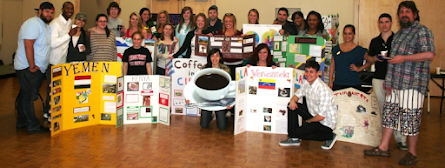This post is by Dr. James Hayes-Bohanan;
Contact jhayesboh@bridgew.edu with any questions.
GEOG 332 meets Mondays 1:50-3:05 in DMF 279 plus two Saturday field trips
Many thanks to the student who pointed out the confusion that arises from the way that this course appears in the Fall 2024 class schedule. It gives us an opportunity to share some information that all prospective students might find helpful.
Catalog description: Students learn how legal and financial strategies, such as conservation easements, can be used to protect land, forest and water resources in the United States, with particular emphasis on New England. The course examines the role of open space in sustainable development strategies that account for interactions among agriculture, forest ecology and economic activity. Case studies include coastal and riparian lands whose vulnerability to climate change makes their protection particularly important in planning for the resilience of human communities.
The class listing appears confusing only because of the awkward way that field trips need to be displayed. In fact, the schedule of this class is rather straightforward. We meet in a regular classroom every Monday afternoon from 1:50 to 3:05 and in addition have two Saturday field trips. This year, they are on September 21 and October 5. We will maintain these dates even if there is wet weather. We might delay them if there is a major storm.
We include these in the formal schedule because they are NOT optional. They are an essential part of learning how to apply geographic thinking to the problem of land protection.
This course is very thorough combination of theory and practice -- the theoretical issues are as complex as they are essential. The practical experience involves direct exploration of lands that are among the first in the world to be managed for land protection.
The first field trip will be to Marsh-Billings-Rockefeller National Historical Park in Woodstock, Vermont. We will meet in the parking lot behind DMF at 7:00 a.m. and travel by university van. I will provide excellent coffee for those who bring their own travel mugs. We will be back to campus no later than 6:00 p.m. Our visit will include indoor spaces of the visitor center and the historic mansion as well as a moderately strenuous hike.
The second field trip will be to Harvard Forest in Petersham, Massachusetts. We will meet in the parking lot behind DMF at 9:30 a.m. and travel by university van. I will provide excellent coffee for those who bring their own travel mugs. We will be back to campus no later than 4:00 p.m. Our visit will include indoor space of the historic Fisher Museum as well as a moderately strenuous hike.
The course textbooks will be available through the bookstore at BSU and may be found through other vendors. Prices for the Gustanski text may be high, but it remains the very best book available on the topic of conservation easements.
Protecting the Land: Conservation Easements Past, Present, and Future by Julie Ann Gustanski, Roderick H. Squires, Jean Hocker (see my Goodreads review for an introduction)
Thoreau's Country: Journey through a Transformed Landscape by David R. Foster (see my Goodreads review for an introduction)
 |
Image: Harvard Forest; we will visit the site of this 2008 scene, which
looks nothing like this today.
|
I am committed to both the spirit and the letter of the Americans with Disabilities Act of 1990. I will work with students, BSU staff, and personnel of the facilities we are visiting to arrange for any reasonable accommodations that might be required to meet the learning objectives of this course and its field experiences.









